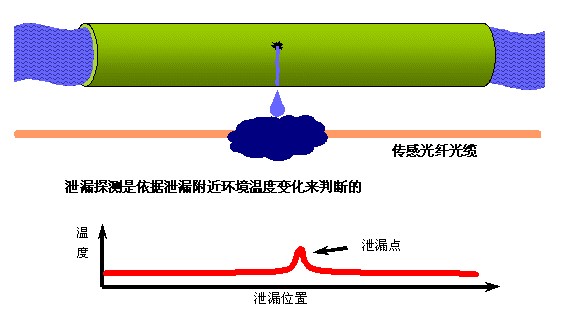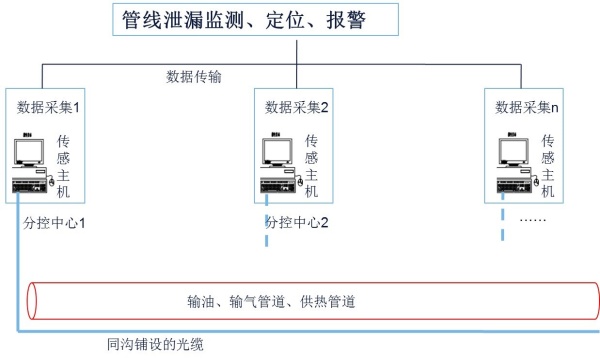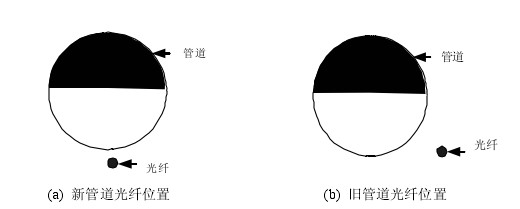


Tel:189-1186-2450
Mobile:189-1186-2450
Email:njzzcg888@163.com
Address:7th Floor, R&D Building, Building 51, Emerging Industries, Nanjing University Science Park, No. 8 Yuanhua Road, Xianlin Street, Qixia District, Nanjing City; Beijing Office: No.1 Zhongliang Road, Daxing District, Beijing, Zhuzong Vanke Plaza
Source:Quasi intelligent sensing Time:2024-06-27
The vigorous development of centralized heating in recent years has entered a new era. In the future, centralized heating will not only continue to expand in scale, but also with technological progress and industry competition, new requirements will be put forward for heating quality and level. With the development of market economy and the impact of world energy prices, China has begun to pay attention to changing the problems of high energy loss, low service life, and frequent malignant accidents in current heating pipelines. Through standard formulation and trial implementation by large heating companies, we actively promote heating pipeline leakage monitoring, change the current situation of poor quality of heating network construction and difficulty in finding pipeline leaks, change traditional construction concepts, research new construction methods, and reasonably and effectively utilize the energy-saving transmission capacity of heating networks to improve their service life. The heating pipeline leakage monitoring system is proposed in response to the backward situation of heating pipeline construction in China, aiming to clarify the correct understanding of the heating pipeline leakage monitoring system and optimize and control the construction process, improve the quality of heating pipeline construction, reduce energy consumption of the heating network, and extend the service life of the heating network.
1.1Current Status of Leakage Monitoring and Detection of Domestic Heating Pipelines
In the 1980s, Nordic heating pipeline technology was applied to domestic centralized heating pipeline projects with foreign government loans. After more than 30 years of rapid development in centralized heating, insulation pipes composed of steel pipes, polyurethane insulation layers, and high-density polyethylene outer protective pipes in a three in one structure have made significant progress in China, with the maximum diameter reaching DN1400. Unfortunately, while China has introduced and absorbed Nordic heating pipeline manufacturing technology, it has not synchronized the introduction of Nordic heating pipeline leakage monitoring technology. Most of the more than 130000 kilometers of heating pipelines that have been laid are directly buried and basically have no leakage monitoring, making it difficult to accurately judge and locate the leakage inside and outside the pipelines, resulting in problems such as water loss, energy loss, and frequent malignant leakage accidents. In the construction of thermal pipelines, the requirements for welding, installation, and pressure testing of working pipes are generally standardized, and the welding quality of working pipes is generally reliable. However, the quality control of insulation and sealing at pipeline joints and temporary connection openings during construction has been basically ignored, resulting in problems such as most insulation and sealing joints not conducting airtightness tests or welding joint tests, poor sealing, and insufficient foam density. Temporary takeover and on-site production of fixed piers do not seal the insulation layer after it is opened, leaving a channel for groundwater to seep into the insulation layer during the construction process. The inadequate sealing of the joint and the lack of sealing for the temporary takeover outer protective pipe have brought great corrosion hazards to the pipeline. The number of insulation joints in the heating pipeline network is huge, and unqualified joints will directly lead to problems such as water ingress in the insulation layer of the heating pipeline, corrosion of the steel pipe, gradual increase in heat loss, and decrease in the service life of the pipeline, which will increase the operating cost of heating and reduce the investment efficiency of the pipeline network. Currently, there are basically no leakage monitoring methods for heating pipelines in China. The enormous hidden danger of pipeline leakage is shocking.
The current heating pipelines in our country are not equipped with leakage monitoring systems, which cannot detect external leakage faults caused by groundwater infiltration into the insulation layer. The detection of medium leakage faults basically relies on very inefficient and outdated methods such as boosting and segmented valve closure to find the leaking pipe section, and then uses relevant instruments, listening rods, ultrasonic detectors, etc. to find the leakage point. These traditional detection methods need to ensure that there is a certain operating pressure in the pipeline system, and can only detect some fault points with severe medium leakage. Minor or external leakage faults are basically undetectable. During the summer pipeline maintenance and inspection process, it is necessary to perform pressure boosting detection on the system to detect leakage points, which results in high detection costs. Moreover, the leakage of the internal medium after boosting will further exacerbate the moisture range of the insulation layer, causing further expansion of external leakage faults and causing larger areas of pipeline corrosion. It can be seen that the current commonly used methods for monitoring leaks in heating pipelines are post detection methods, lacking preventive measures. When detecting leaks and repairing them, only welding and repairing the local working pipes at the leak location is carried out, without detecting the damp range of the insulation layer. The repair is not thorough, and other rust perforation points will still appear after repairing the leak point.
1.2The significant significance of leakage monitoring in heating pipelines
More than a decade ago, the leakage monitoring system for heating pipelines also entered the Chinese heating pipeline market due to the requirements of foreign government loan projects, providing support for multiple foreign government loan projects. But most monitoring systems are not functioning properly, and only meet the needs of loan project acceptance. There are very few domestically invested heating pipeline projects that have installed pipeline leakage monitoring systems. After communicating with industry monitoring system suppliers and personnel from multiple heating enterprises that have installed monitoring systems or alarm lines in their pipelines, it was found that the main reason for the inability of the installed systems to operate properly is due to ineffective control during the construction process. Mainly reflected in: 1) The alarm line is connected by the construction unit and rarely tested, while the construction unit personnel lack corresponding training, making it difficult to correctly install and detect the monitoring system's lines; 2) The problems of patching, pipeline quality, and construction damage that occur during construction cannot be corrected in a timely manner, resulting in the inability of the monitoring system to achieve full line connectivity during the construction process; 3) The project owner lacks understanding of the construction quality control of the monitoring system, resulting in the inability to strictly control the project; 4) The lack of corresponding norms, standards, and operating procedures has led to the lack of quality control standards to rely on in the construction of monitoring systems; 5) The purpose of monitoring system suppliers bundling and selling monitoring systems is only to achieve the sales of pipeline products, and they themselves lack attention to the construction of monitoring systems.
By examining the current situation of materials, construction, joint repair, and operation and maintenance of domestic heating pipelines, we can easily draw the conclusion that installing a leakage monitoring system for heating pipelines is no longer a problem that should be configured or not, but a necessary one to reduce problems with heating pipelines, reduce resource and energy waste, and improve the well-being of the people.
The key to solving this prominent problem is to improve the construction quality of heating pipelines by installing a leakage monitoring system. The quality of pipeline patching is repeatedly confirmed through continuous testing during the installation process of the monitoring system. The strict requirements for the lack of external sealing positions in wells, temporary connections, and other parts during the installation process of the monitoring system are used to improve the quality of construction operations. The material and construction quality are further confirmed through the inspection and measurement of pipeline backfilling, pressure testing, and other processes by the monitoring system. Construction damage and fault points are eliminated, and a complete and compliant heating pipeline network is constructed. It should be said that the pipeline leakage monitoring system is indeed a necessary and necessary standard configuration for domestic heating pipelines. The internal leakage of heating pipelines originates from external leakage, and the corrosion of working pipes caused by external leakage ultimately leads to medium leakage. Therefore, the operation and maintenance of heating pipelines should shift from post repair work to preventive maintenance work, that is, from mainly repairing internal medium leakage points to mainly repairing external leakage points. Only in this way can the maintenance cost of pipelines be reduced and the service life of pipelines be effectively improved. The improvement of the service life of heating pipelines means a reduction in energy loss in the pipeline network and an increase in investment efficiency in the pipeline network. How can we transition the operation and maintenance of heating pipelines from passive maintenance to preventive maintenance? The pipeline leakage monitoring system is the key to achieving this transformation. If preventive maintenance is properly implemented, the pipeline leakage monitoring system can bring heating enterprises thousands of times the return on investment equivalent to the monitoring system itself throughout the entire service life of the heating pipeline.
DTS system thermal pipeline leakage monitoring
Most urban heating pipelines use hot water and steam as the medium for heat transfer. When a heating pipeline leaks, the leaked hot gas and hot water can cause changes in the temperature around the pipeline. Based on the temperature changes along the pipeline, it is possible to determine whether the pipeline has leaked and locate the leakage point.
The distributed fiber optic temperature measurement system can monitor the temperature distribution of the temperature sensing optical cable. The temperature sensing optical cable is laid below the thermal pipeline. When the thermal pipeline leaks and the surrounding temperature changes, the distributed fiber optic temperature measurement system can quickly monitor the temperature change.
When using a distributed fiber optic temperature measurement system to detect thermal pipelines in the pipeline trench, the temperature measurement fiber optic sensors can be laid along the thermal pipeline, placed on the surface of the pipeline insulation layer, and fixed at regular intervals. Try to keep the temperature measurement fiber optic sensor close to the thermal pipeline and avoid slipping due to gravity. When the wall thickness of the heat pipeline becomes thinner, the joints break, or the insulation layer is damaged, it can cause temperature anomalies in local pipe sections. The temperature measurement fiber optic sensor can timely capture these anomalies and reflect them in the main unit of the monitoring station. Through graphical professional analysis software, the position and temperature deviation of abnormal points can be analyzed and extracted, achieving alarm function. The schematic diagram is shown in Figure 4-1.

system composition

Cable laying
Ø Fiber optic laying position By laying the detection optical cable along the pipeline and laying it in the soil at a depth of 1cm below the pipeline, and then connecting it to the host in the control room, the temperature along the entire pipeline can be detected, and the leakage of the pipeline can be accurately located. When the temperature rises at a certain location, it is determined that a leak has occurred.
For the new pipeline, the optical cable should be laid below the centerline of the pipeline during the pipeline laying process, as shown in Figure 4-3 (a); For the already laid pipeline, lay a detection optical cable on one side of the pipeline, with its height level with the bottom of the pipeline, as shown in the figure As shown in 4-3 (b).


 189-1186-2450
189-1186-2450
 7th Floor, R&D Building, Building 51, Emerging Industries, Nanjing University Science Park, No. 8 Yuanhua Road, Xianlin Street, Qixia District, Nanjing City; Beijing Office: No.1 Zhongliang Road, Daxing District, Beijing, Zhuzong Vanke Plaza
7th Floor, R&D Building, Building 51, Emerging Industries, Nanjing University Science Park, No. 8 Yuanhua Road, Xianlin Street, Qixia District, Nanjing City; Beijing Office: No.1 Zhongliang Road, Daxing District, Beijing, Zhuzong Vanke Plaza
Copyright© All Rights Reserved for Intelligent Sensing SuICPB No. 2024111040 技术支持:中企云达